| Անվանումը |
Botanical Name |
Height |
Plant Characteristics and Notes |
USDA
Zones |
Growing Requirements
Benefits |
 |
Ալժիրյան բաղեղ (Algerian
Ivy, Hedera canariensis, Алжирский плющ) |
|
 |
Algerian Ivy’s glossy 4-8″ foliage and the vines
ability to crawl, creep and climb just about anywhere makes this a
great ground cover or privacy screen |
4-7 |
   
 |
|
Աշնանային ձարխոտ (Autumn
Fern, Dryopteris erythrosora, Осенний папоротник) |
|
15-24″ |
The fronds of the Autumn Fern begin to emerge in early
spring as a copper to reddish color and mature to dark green by mid
summer. In the fall months, Autumn Ferns once again change colors. They
should be planted in evenly moist, compost
rich soil
and grown where they will receive partial to full shade. |
5-9 |
    |
 |
Bears
Breeches, Acanthus species |
|
3-4 ft. |
Bear’s Breeches are huge, mound forming perennials with
dramatic, deeply cut, bright green leaves that can reach one foot wide
and two feet long. From late spring until mid summer, they produce
impressive, 2-3 foot tall spikes of hooded, white or light pink flowers. |
5-10 |
   

  |
 |
Բեգոնիա Ռեքս (Begonia
Rex, Begonia rex-cultorum, Бегония Рекс) |
|
4-12″ |
The Rex or Painted-Leaf Begonias arerhizomatous,
clump forming, tender perennials that are normally grown
as house plants. Their leaves vary considerably in texture,
size, shape, patterns and colors. The inconspicuous, small, pink or
white flowers may appear at any time of the year |
10-12 |
  

  |
 |
(Black
Mondo Grass, Ophiopogon planiscapus) |
|
6-12″ |
Black Mondo Grass grows as neat, slowly spreading, 4″
tufts of ¼” wide, sweetly fragrant, straplike leaves. New foliage
emerges dark green in spring then changes to dark purplish-black by
summer.Loose spikes of small, light pink or white, bell shaped flowers
appear in mid summer. |
5-9 |
   

  |
 |
(Bleeding
Heart, Dicentra spectabilis) |
|
2-3 ft. |
Bleeding Heart is a mound forming plant with finely
cut, fern-like foliage on graceful 2-3 foot arching stems topped with
pretty, heart shaped, 1″ flowers in late spring or early summer.
Excellent plants for any shade garden or woodland setting |
3-9 |
   
 
   |
 |
(Blue
Bugleweed, Ajuga genevensis, Живучка женевская) |
|
4-6″ |
Typical Ajuga with 8″ blue flowers in the Spring. Deer
Resistant ground cover |
3-9 |
    

 |
 |
Blue
Corydalis, Corydalis flexuosa |
|
12-18″ |
Blue Corydalis is a slow growing, evergreen perennial
that will eventually form a dense 18″ clump of elegant, 12″ tall,
lace-like green foliage. Eighteen inch spikes of dangling, tubular, sky
blue flowers will adorn the plant from late spring until fall in
regions with cool summers |
5-9 |
   

 |
 |
Brass
Buttons, Leptinella squalida |
|
1-2″ |
The interesting feathery, fern like foliage of the New
Zealand Brass Buttons may give the impression that it is a delicate
plant, but in reality, it is a tough enough ground cover that it can
take light foot traffic and is even used as a lawn substitute in many
areas. |
5-9 |
    
 |
 |
Brazilian
Plume Flower, Justicia carnea |
|
3-5 ft. |
The Brazilian Plume Flower is a shade loving, tropical
evergreen perennial shrub with large deep green leaves.
It produces a never ending show of large spikes of brightly colored,
tubular flowers from spring to fall. |
9-10 |
    

      |
 |
| Bugleweed, Ajuga reptens |
|
4-6″ |
Ajuga grows well in full shade to full sun and
tolerates a wide range of soil conditions as long as soil is well
drained. |
3-9 |
    
 |
 |
| Bunchberry, Cornus canadensis |
|
4-6″ |
Bunchberry Dogwoods are probably the ultimate ground
cover plants for
growing in moist, woodland areas or in your shade
garden. These short, bright green plants only reach six
inches tall. They produce bright red berries that are eaten by many
species of wild
birds. |
3-8 |
   

 |
 |
Coastal
Wood Fern, Dryopteris arguta |
|
18-24″ |
Coastal Wood Ferns can be grown in most average garden
soils as long as it is well draining. They grow best in partial or full
shade, but can be grown in full sun if they are kept moist. |
4-8 |
     |
 |
Black
Mondo Grass, Ophiopogon planiscapus |
|
6-12″ |
Black Mondo Grass grows as neat, slowly spreading, 4″
tufts of ¼” wide, sweetly fragrant, straplike leaves. New foliage
emerges dark green in spring then changes to dark purplish-black by
summer.Loose spikes of small, light pink or white, bell shaped flowers
appear in mid summer. |
5-9 |
   

  |
 |
Bleeding
Heart |
Dicentra spectabilis |
2-3 ft. |
Bleeding Heart is a mound forming plant with finely
cut, fern-like foliage on graceful 2-3 foot arching stems topped with
pretty, heart shaped, 1″ flowers in late spring or early summer.
Excellent plants for any shade garden or woodland setting |
3-9 |
   
 
   |
 |
Blue
Bugleweed |
Ajuga genevensis |
4-6″ |
Typical Ajuga with 8″ blue flowers in the Spring. Deer
Resistant ground cover |
3-9 |
    

 |
 |
Blue
Corydalis |
Corydalis flexuosa |
12-18″ |
Blue Corydalis is a slow growing, evergreen perennial
that will eventually form a dense 18″ clump of elegant, 12″ tall,
lace-like green foliage. Eighteen inch spikes of dangling, tubular, sky
blue flowers will adorn the plant from late spring until fall in
regions with cool summers |
5-9 |
   

 |
 |
Brass
Buttons |
Leptinella squalida |
1-2″ |
The interesting feathery, fern like foliage of the New
Zealand Brass Buttons may give the impression that it is a delicate
plant, but in reality, it is a tough enough ground cover that it can
take light foot traffic and is even used as a lawn substitute in many
areas. |
5-9 |
    
 |
 |
Brazilian
Plume Flower |
Justicia carnea |
3-5 ft. |
The Brazilian Plume Flower is a shade loving, tropical
evergreen perennial shrub with large deep green leaves.
It produces a never ending show of large spikes of brightly colored,
tubular flowers from spring to fall. |
9-10 |
    

      |
 |
| Bugleweed |
Ajuga reptens |
4-6″ |
Ajuga grows well in full shade to full sun and
tolerates a wide range of soil conditions as long as soil is well
drained. |
3-9 |
    
 |
 |
| Bunchberry |
Cornus canadensis |
4-6″ |
Bunchberry Dogwoods are probably the ultimate ground
cover plants for
growing in moist, woodland areas or in your shade
garden. These short, bright green plants only reach six
inches tall. They produce bright red berries that are eaten by many
species of wild
birds. |
3-8 |
   

 |
 |
Coastal
Wood Fern |
Dryopteris arguta |
18-24″ |
Coastal Wood Ferns can be grown in most average garden
soils as long as it is well draining. They grow best in partial or full
shade, but can be grown in full sun if they are kept moist. |
4-8 |
     |
 |
| Creeping Buttercup |
Ranunculus repans |
9-12″ |
In many places, especially my gardens, Creeping
Buttercups are considered to be a noxious and invasive weed! However,
theymay have
their place in a poorly drained, shady area of your garden. They have
green, deeply cut, snowflake foliage and bright yellow flowers in
spring. |
8-11 |
     
  |
 |
Creeping
Lily Turf |
Liriope spicata |
8-10″ |
Creeping Lily Turf is a grass like ground cover that
grows as spreading clumps of fine, dark green leaves that turn to
bronze-green in the winter. Lily Turf produces spikes of tiny flowers
in late summer, followed by dark blue berries in late fall. |
4-10 |
   

  |
 |
Deer
Fern |
Blechnum spicant |
18-24″ |
Deer Ferns resemble miniature Sword ferns but smaller
with rounded fronds. They are drought tolerate but do best if kept damp |
5-8 |
    
 |
 |
English
Ivy |
Hedera helix |
 |
Fast growing, hardy evergreen vine for shade or partial
sun, good for screening, ground cover, erosion control |
4-7 |
   |
 |
Fairy
Wings |
Epimedium |
6-20″ |
Fairy Wings (Bishops Cap) will survive in one of the
most difficult situations in the garden; the dry shade beneath a tree. |
4-8 |
    
     |
 |
False
Aralia |
Schefflera elegantissima |
4-6 ft. |
False Aralias are small, tropical evergreen trees that
are native to the islands of the South Pacific. In their native
environment,Schefflera elegantissima can
grow up to 26 feet tall, but when grown in pots or planters they seldom
reach more than 4-6 feet tall. |
10-12 |
  
 
  |
 |
False
Spirea |
Astilbe chinensis |
6-24″ |
The fern like foliage and the showy plume flowers of
False Spirea make them a favorite summer flowering perennial. |
6 |
   
  |
 |
| Fatshedera |
Fatshedera lizei |
 |
Fatshedera is a hardy evergreen, non climbing vine that
is the result of the cross between Fatsia
japonica and
Hedera helix. Fatshedera tends to grow upwards a few feet before
falling and creeping across the ground |
8-11 |
  
 |
|
| Fleabane |
Erigeron glaucus |
6″-10″ |
Clump forming, small spoon shaped leaves; Daisy-like
pink flowers |
3-10 |
   
  |
|
| Foamflower |
Tiarella cordifolia |
6-10″ |
Foamflowers are easy to grow, perennial wildflowers
that form 6″-10″ tall clumps of heart shaped leaves. They quickly
spread to form nice two foot patches of this shade
loving groundcover. Tiarella produce whispy plumes of creamy
white or pale pink, ¼” star shaped flowers. |
3-8 |
   

  |
 |
| Forget-me-not |
Myosotis palustris |
3-8″ |
Dense mat of small green leaves covered with tiny blue
flowers. |
3-9 |
    

 |
 |
| Fuchsia |
Fuchsia |
1-4 ft. |
Fuchsia care is often determined by where you live and
your climate. Fuchsias can beseed
grown or struck
from softwood cuttings. Not
all varieties are hardy |
7-10 |
   

     |
 |
| Gloxinia |
8-12″ |
Sinningia hybridus |
Gloxinias come in a wide range of colors, with
variations in both foliage and flower forms. They are tuberous plants
which are usually grown as houseplants, but may also be grown in
containers in a shaded part of the garden. |
10-12 |
   

      |
 |
Golden
Loosestrife |
Lysimachia punctata |
3-4 ft. |
Golden Loosestrife is an excellent plant for bog
gardens or next to ponds and streams. This 3-4 foot tall perennial has
light green, 3″ leaves with serrated edges. In the summer, they produce
abundant spikes of star shaped, golden yellow flowers, tinged in red at
the base. |
5-10 |
     
 
 |
 |
| Ground Ivy |
Glechoma hederacea |
2-3″ |
Ground Ivy is an aggressively growing, evergreen ground
cover. It will survive almost anywhere that there is sufficient
moisture. The five inch spikes of tiny orchid-like flowers appear
continuously from March through July |
Hardy |
    
   |
 |
Hart’s
Tongue Fern |
Asplenium scolopendrium |
24-30″ |
Unlike most other ferns, tropical looking
Hart’s Tongue Fern has strap-like undivided fronds. These glossy green
ferns are native to most areas of the world with alkaline soil. Keep
the soil evenly moist. Hart’s Tongue Ferns are well suited for growing
as a container plant. |
6-8 |
     |
 |
Irish
Moss |
Sagina subulata |
<1″ |
Irish Moss is an excellent terrarium
plant. Mosses grow primarily in lightly shaded areas.
Thousands of tiny Moss plants will bunch together to make a single
patch of moss. |
5-10 |
   
 |
|
Jack
in the Pulpit |
Arisaema species |
12-30″ |
Jack in the Pulpits are distinctive, woodland
wildflowers that are native to North America and parts of Asia. In
spring to early summer, tiny, insignificant flowers form on the spadix (Jack),
hidden down inside the hooded spathe (The
Pulpit), which emerges from the middle of the foliage. |
vary |
   
 
 |
 |
Jacob’s
Ladder |
Polemonium |
6-36″ |
Clump forming perennials that grow in swirling rosettes
of bright green or variegated, fern-like foliage. Produces loose
clusters of tubular or bell shaped flowers. Plants go completely
dormant in the winter but quickly re-emerge in early spring. |
2-9 |
     

    |
 |
Japanese
Aralia |
Fatsia japonica |
6-8 ft. |
Japanese Aralias are one of the easiest of allshade
garden or
house plants to grow and care for. They have large dark green,palmate
leaves and
form tropical looking, evergreen shrubs that can grow up to 6-8 feet
tall and 6 feet wide. |
8-11 |
   

 |
 |
Japanese
Painted Fern |
Athyrium niponicum ‘Pictum’ |
12-15″ |
The slow spreading Japanese Painted Fern is probably
the most decorative of all ferns. The fronds are tri-colored blends of
silver, pink and green, standing above burgundy stems. Japanese Painted
Ferns should be grown in full shade to partial shade, where soil is
moist but well-drained. |
4-8 |
    |
 |
| Japanese Sedge Grass |
Carex morrowii ‘Variegata’ |
1 ft. |
Japanese Sedge Grass is a semi-evergreen vigorous
grower that will grow in full shade and even tolerates full sun in cool
climates. This sedge is great for growing in container. |
5-9 |
    
 |
|
Japanese
Spurge |
Pachysandra terminalis |
6-10″ |
Pachysandra is a very easy to care for, durable, low
growing, mat forming, slow spreading ground cover plant that grow on
thick, unbranched stems to about 6″ tall in partial shade and 10″ in
deep shade. |
5-9 |
  
 
 |
 |
Licorice
Fern |
Polypodium glycyrrhiza |
12-18″ |
Licorice Ferns are attractive, epiphytic plants that
are primarily found growing with mosses on rotting logs or in Bigleaf
Maple trees. They are fairly difficult to grow without a rotting log to
plant them in. Licorice Ferns grow best partial to full shade, but will
tolerate very short periods of bright sun. Generally they require moist
soil, but they will tolerate brief periods of drought. |
5-9 |
      |
 |
Lily
Turf |
Liriope muscari |
18″ |
Lily Turf are relatively slow spreading plants that
eventually form large, 24″-30″ wide clumps of loose, 18″ tall, ½” wide
leaves. Lily Turf plants form 6″-8″, spikelike clusters of ¼”, white or
purple flowers in late summer. |
6-10 |
   

  |
 |
Maidenhair
Fern |
Adiantum raddianum |
12″ |
Delta Maidenhair Ferns are elegant, fast growing,
evergreen foliage plants with delicate, lacy fronds that are held on
wiry, 6″-12″ black stems. Maidenhair fronds are composed of bright
green, triangular leaflets and can grow up to 12″ wide and 18″ long. |
10-12 |
   
 |
 |
Maidenhair
Spleenwort |
Asplenium trichomanes |
4-7″ |
The Maidenhair Spleenwort is a rhizomous, low growing,
creeping fern that forms dense tufted rosettes of deep green fronds on
black, wire-like stems. In nature, Maidenhair Spleenworts grow in shady
rock cervices and rocky, calcium rich (limestone)soil.
They require constant moisture and good drainage. |
3-9 |
     |
 |
| Masterwort |
Astrantia maxima |
18-30″ |
Masterworts have bright green, palmateleaves
with 5-7 fingers. From early to mid-summer, they produce wirey,
top-branched stems with intricately formed, ¾”-1¼”umbels of
tightly packed, 5 petaled flowers, surrounded by a ring of papery,
petal-like bracts. |
5-9 |
    
  |
 |
Miniature
Daisy |
Bellium mimutum |
2″ |
The Miniature Daisy plant is a vigorous growing, mat
forming perennial with dense, bright green, 1″ spoon shaped foliage.
They only grow 2″ tall, but spread to about 18″. From late spring
through summer, they cover themselves with tiny, ½” Daisy flowers on
wirey stems. |
6-9 |
   

 |
 |
Mondo
Grass |
Ophiopogon japonicus |
6-10″ |
Mondo grass slowly forms tight, 24″ matted clumps of
8″-12″ long, 1/8″ wide, bright green, grass-like foliage.
Spikes of small, lavender or light purple flowers appear in the late
summer |
6-9 |
    
 |
 |
| Monkey Flower |
Mimulus hybridus |
1 ft. |
The Monkey Flower is a colorful, easy to grow addition
to the shaded areas of your garden. This plant grows well in containers
and can be grown as a house plant |
 |
   

    |
 |
| Moss |
Many
Species |
<1″ |
Mosses grow naturally in most temperate areas of the
world. They are primarily found growing in lightly shaded areas or
where there are periods of sun in the morning or late afternoon. Very
usable for creating aterrarium! |
1-8 |
   
  |
 |
Norfolk
Island Pines |
Araucaria heterophylla |
6+ ft. |
The beauty and symmetry as well as the soft flowing
texture of the foliage will make you want to decorate your Norfolk Pine
and use it as a living
Christmas tree! |
10-11 |
   
 |
 |
Oak
Fern |
Gymnocarpium dryopteris |
5-12″ |
Oak Ferns spread by non-aggressive, underground
rhizomes forming a nice delicate looking ground cover in your woodland
setting. Oak ferns should be grown in evenly moist, compost rich soil
and planted where it will grow in partial to full shade. |
3-9 |
    |
 |
Oregon
Grape |
Mahonia aquifolium |
3-6 ft. |
Oregon Grape is a deer
resistant, low maintenance, durable, evergreen shrub with
glossy green, holly like foliage. It produces spikey clusters of Butterfly
attracting, bright yellow flowers in the spring, followed by
bluish-black berries to feed the birds. |
5-9 |
    
    |
 |
Pacific
Maidenhair Fern |
Adiantum pedatum |
18-24″ |
The Pacific Maidenhair Fern can add a bit of graceful
elegance to any partial to fully shaded area of your garden. The fronds
emerge in early spring on black, wire-like stems that reach 18-24
inches. Your Pacific Maidenhair should be planted in a rich, humus soil
and provided with constant, even moisture. |
3-8 |
    |
 |
| Periwinkle |
Vinca |
6″ |
Periwinkles are fast growing, evergreenground
cover plants with
opposing pairs of glossy dark green or variegated, oblong to lance
shaped, 1½”-3″ leaves. They produce an abundance of single, 1″-2″
funnel shaped flowers with five flared and flattened petals. |
4-9
7-10 |
   
 
   |
 |
Scouler’s
Corydalis |
Corydalis scouleri |
3 ft. |
Corydalis scouleri is a
perennial wildflower that is native to western Washington, Oregon and
parts of southwestern British Columbia. Scouler’s Corydalis will
gradually form a 3 foot clump of 3 foot stems of light green, lace-like
foliage. Spikes of hot pink, tubular flowers appear in late spring and
continue into summer. |
7-9 |
    
 |
 |
| Primrose |
Primula |
6-12″ |
Hundreds of species and varieties suitable for a wide
range of garden uses. Dwarf varieties are best for rock gardens |
vary |
  
       |
 |
Rainbow
Leucothoe |
Leucothoe fontanesiana |
3-5 ft. |
Rainbow Leucothoe is an easy to care for, slow growing,
3-5 ft. multi-stemmed evergreen shrub, with glossy, variegated 3-4″
leaves. Good as an accent plant or for boggy areas. |
5-8 |
     
 
  |
 |
| Rockery Orchid |
Pleione bulbocodioides |
3″ |
Produces a single 3 inch orchid flower
in early Spring, followed by a single 6 inch leaf; tough to grow, but
very rewarding |
8-10 |
 
   |
|
| Rodgersia |
Rodgersia aesculifolia |
18-30″ |
The Fingerleaf Rodgersia is a large, imposing, moisture
loving plant that will stand out, no matter where you plant it in your
garden. Rodgersias produce their long lasting, fluffy plumes of tiny,
star shaped, light pink or white flowers beginning in late spring and
continuing until mid summer. |
5-9 |
    
  |
 |
Rue
Anemone |
Anemonella thalictroides |
6-12″ |
The slow growing Rue Anemone is a slow growing,
tuberous, woodland wildflower. It produces dainty pink blooms with the
first wave of wildflowers in the spring. |
4-9 |
  
  |
|
Solomon’s
Seal |
Polygonatum multiflorum |
2-3 ft. |
The Solomon’s Seal is a shade loving, deciduous
perennial that produces large, slow spreading clumps of arching, three
feet stems lined with pairs of bright green leaves. In late spring,
clusters of 2-5 elongated bell shaped, greenish-white flowers will hang
beneath each pair of leaves. |
5-9 |
    |
 |
| Spiderwort |
Tradescantia x andersoniana |
18-24″ |
Spiderworts are clump forming perennials that from
early through mid-summer continuously produce butterfly
attracting, 1″-1½”, three petaled, triangular, flowers on
stems that rise slightly above the narrow, strap-like foliage. |
4-9 |
     

    |
 |
Spotted
Deadnettles and Lamiums |
Lamium species |
4″-24″ |
Spotted Deadnettle is a spreading, semi-evergreen
member of the mint family. They are known for their beautiful silver
and green variegation patterns in the textured foliage and spires of
dainty, hooded flowers in early summer |
6-10 |
   

   |
 |
Spotted
Lungwort |
Pulmonaria officinalis |
8-12″ |
Spotted Lungwort is a clumping, evergreen perennial
that is known for its pretty, marbled foliage and brilliantly colored
spikes of nodding flowers that appear in early spring and last for
several weeks |
6-9 |
  
   |
 |
Tassle
Fern |
Polystichum polyblepharum |
18-24″ |
Tassle Ferns are very showy and easy to grow. Their
dark green fronds grow in a very symetrical, rosette form. The stiff
stems are covered with soft, copper-brown hairs. Tassle Ferns should be
planted in compost rich, evenly moist soil in a area with partial to
full shade. |
5-8 |
    |
 |
Toad
Lily |
Tricyrtis hirta |
30-36″ |
The Common Toad Lily is an easy to care for, slow
spreading, clump forming perennial with 4″-6″, deep green leaves
alternating along multiple, 30″-36″ upright, arching stems. Tricyrtis
hirta produces
loose clusters of awesome Toad flowers at each node along the stem. |
4-9 |
   

  |
 |
| Trillium |
Trillium grandiflorum |
8-24″ |
Trilliums are shade loving, spring blooming perennial
woodland wildflowers. They have three dark green, single layer leaves
below a green three leaf whorl, below their large three petal flower.
Trilliums will most likely perish if their foliage is cut from the plant |
3-7 |
   

      |
 |
Western
Sword Fern |
Polystichum munitum |
3-5 ft. |
Native to the coastal forests of North America, this
large, easy to grow fern grows best when planted in compost rich soil
in a cool, shady, moist garden location. Western Sword Ferns are deer
resistant and suitable for growing in the acidic
soil found
beneath Cedar Trees and other conifers. |
5-9 |
     
 |
 |
Wax
Begonia |
Begonia semperflorens |
6-12″ |
Dwarf varieties of Wax Begonia grow from 6″-8″ tall.
Tall varieties grow from 10″-12″ tall. They have succulent stems and
waxy, deep green to dark mahogany colored foliage, and they produce
loose clusters of single or double, white, pink or red flowers from
early May until October. |
9-11 |
    

   |
 |
Wild
Ginger |
Asarum species |
6-10″ |
Wild Gingers are low growing, woodland perennials that
are known for their showy,Cyclamen-like,
heart shaped foliage and their very unique, three lobed flowers that
hide from view below the foliage. |
5-9 |
   

   |
 |
 Խորդենին (աղավնակտուց, կռնկենի) (անգլ.՝ Geranium, Storksbills, ռուս.՝ Пеларгония, լատ.՝ Pelargonium) խորդենազգիների ընտանիքի միամյա կամ բազմամյա խոտաբույս է: Հայտնի է 300 (այլ տվյալներով՝ 400) տեսակ: Խորդենու հայրենիքը Հարավային Աֆրիկան է, որտեղից Եվրոպա է բերվել XVII դարի վերջին՝ որպես գեղազարդիչ բույս: Խորդենին լայնորեն մշակվում է Ալժիրում, Ամերիկայում, Իսպանիայում, Ճապոնիայում:
Խորդենին (աղավնակտուց, կռնկենի) (անգլ.՝ Geranium, Storksbills, ռուս.՝ Пеларгония, լատ.՝ Pelargonium) խորդենազգիների ընտանիքի միամյա կամ բազմամյա խոտաբույս է: Հայտնի է 300 (այլ տվյալներով՝ 400) տեսակ: Խորդենու հայրենիքը Հարավային Աֆրիկան է, որտեղից Եվրոպա է բերվել XVII դարի վերջին՝ որպես գեղազարդիչ բույս: Խորդենին լայնորեն մշակվում է Ալժիրում, Ամերիկայում, Իսպանիայում, Ճապոնիայում: 







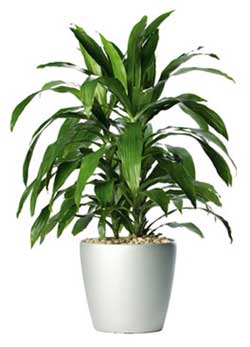
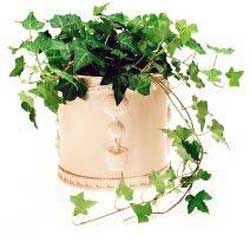
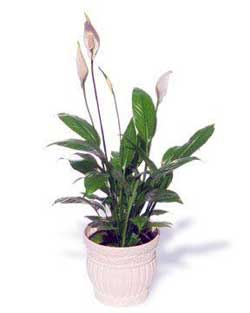





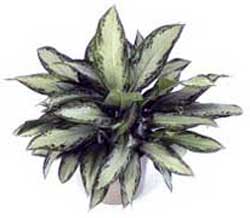

 Կուֆեա հիսոփատերևը (անգլ.՝ False heather, Mexican heather, Hawaiian heather or Elfin herb, ռուս.՝ Куфея иссополистная, լատ.՝ Cuphea hyssopifolia)
Կուֆեա հիսոփատերևը (անգլ.՝ False heather, Mexican heather, Hawaiian heather or Elfin herb, ռուս.՝ Куфея иссополистная, լատ.՝ Cuphea hyssopifolia)





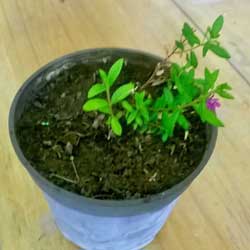

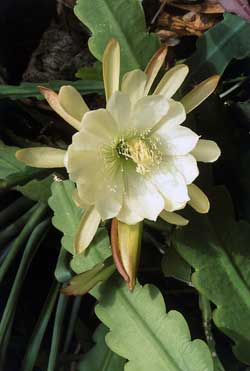
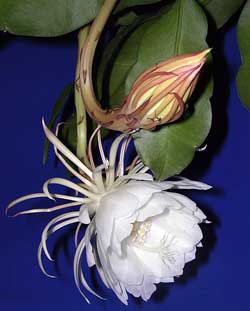
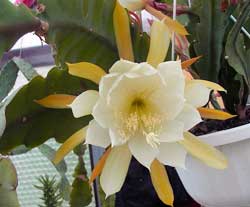
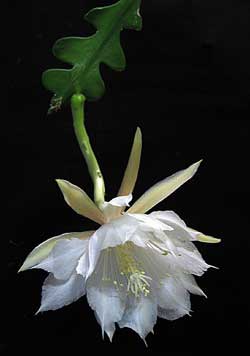
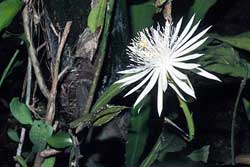
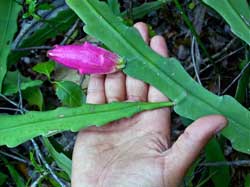
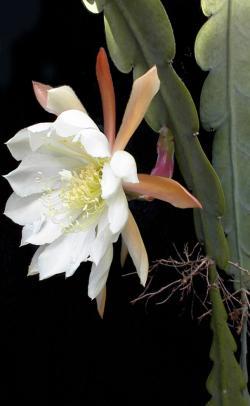
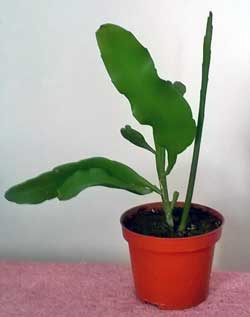


 Բաղեղ Ալժիրյանը (անգլ.՝ Algerian Ivy, Canarian Ivy, ռուս.՝ Плющ алжирский, լատ.՝ Hedera algeriensis, Hedera canariensis) բաղեղի տեսակ է, որն աճում է Կանարյան կղզիներում և Հյուսիսային Աֆրիկայում:
Բաղեղ Ալժիրյանը (անգլ.՝ Algerian Ivy, Canarian Ivy, ռուս.՝ Плющ алжирский, լատ.՝ Hedera algeriensis, Hedera canariensis) բաղեղի տեսակ է, որն աճում է Կանարյան կղզիներում և Հյուսիսային Աֆրիկայում: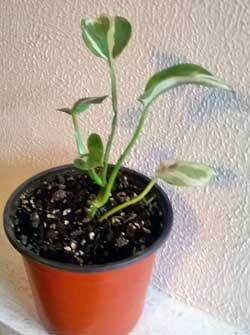
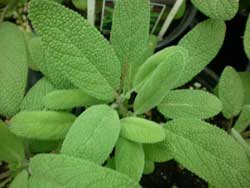 Եղեսպակը (անգլ.՝ Sage, ռուս.՝ Шалфе́й, լատ.՝ Salvia) շրթնածաղկավորների (Lamiaceae) ընտանիքի բազմամյա խոտաբույսերի կամ կիսաթփերի ցեղ է։ Հայտնի է Եղեսպակի 700-ից ավելի տեսակ: Պարտեզներում և տանը՝ որպես սենյակային բույս ամենատարածվածը Եղեսպակ դեղատուն է (լատ.՝ Salvia officinalis):
Եղեսպակը (անգլ.՝ Sage, ռուս.՝ Шалфе́й, լատ.՝ Salvia) շրթնածաղկավորների (Lamiaceae) ընտանիքի բազմամյա խոտաբույսերի կամ կիսաթփերի ցեղ է։ Հայտնի է Եղեսպակի 700-ից ավելի տեսակ: Պարտեզներում և տանը՝ որպես սենյակային բույս ամենատարածվածը Եղեսպակ դեղատուն է (լատ.՝ Salvia officinalis):